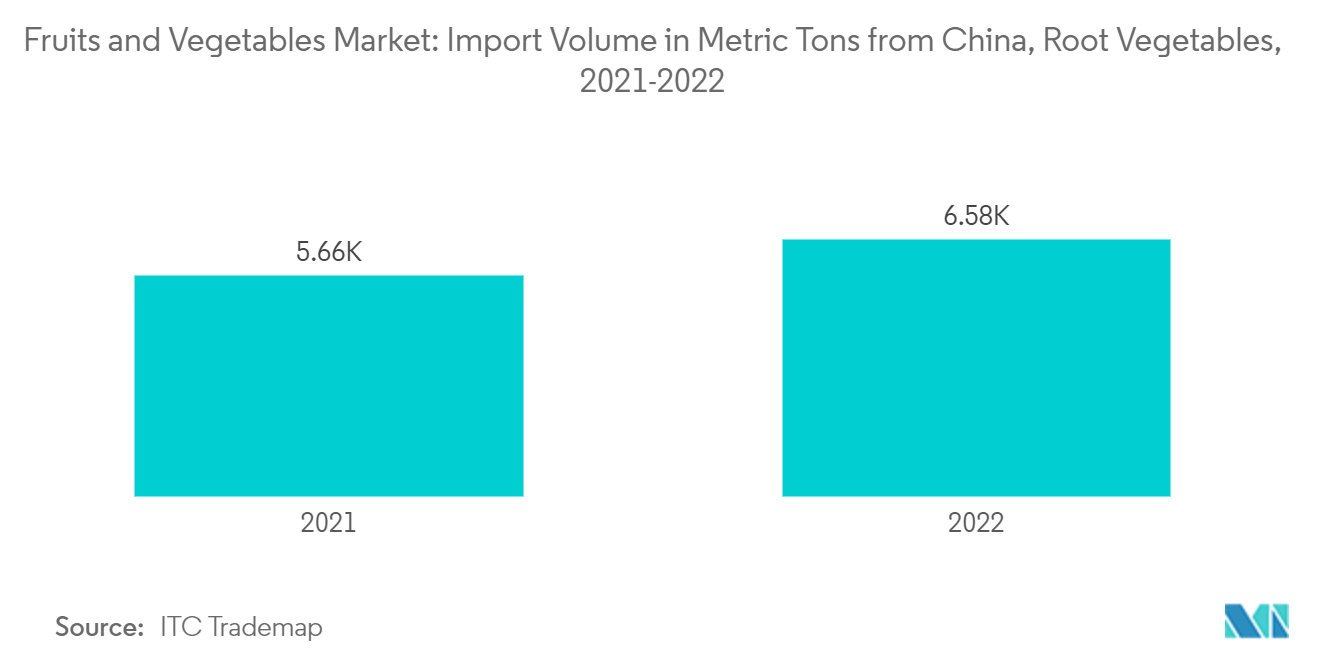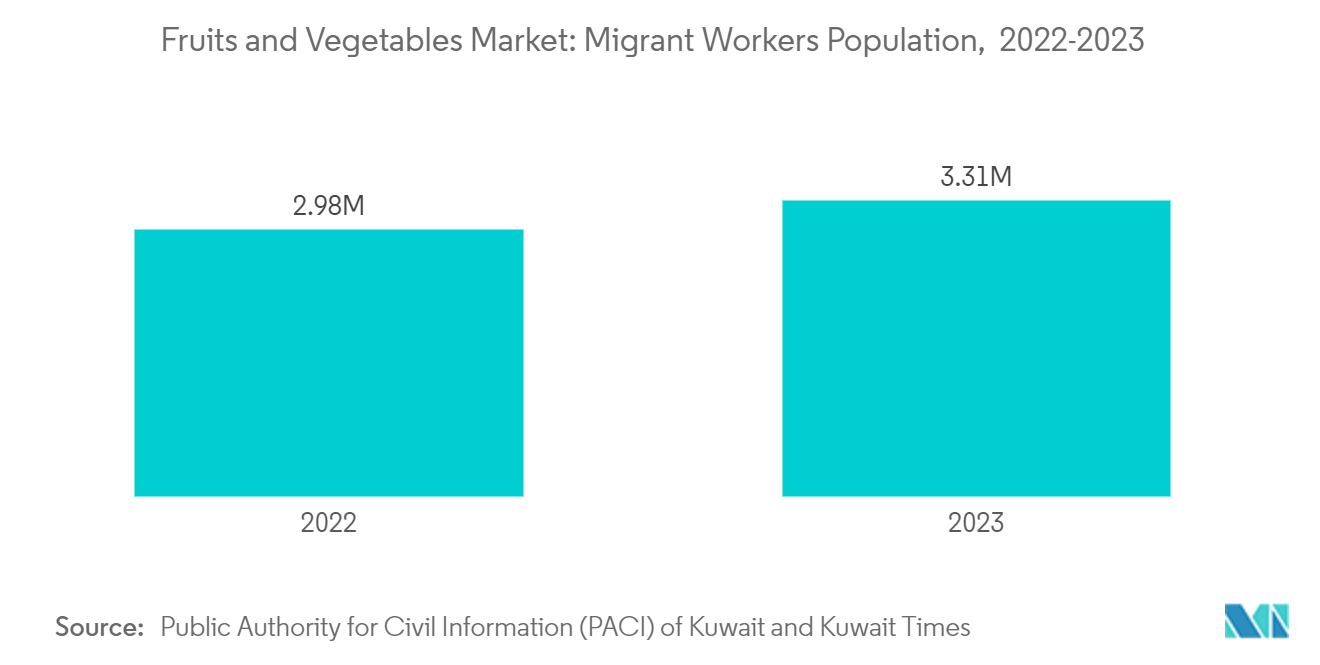Market Trends of Kuwait Fruits & Vegetables Industry
Import of Fruits and Vegetables to meet the Domestic Demand
Kuwait has a small agricultural sector and limited arable land, making it difficult to produce sufficient quantities of fruits and vegetables to meet the domestic demand of the rising population. The country had a population of 3,138,355 in 2023 with a total arable land of 8,000 hectares as per the World Fact Book CIA (Central Intelligence Agency). The natural water resources required for irrigation are minimal, with most water used coming from desalination plants that consume a lot of electricity. Domestic farmers cannot bear the costs as there are no subsidies for electricity.
Thus, the agricultural sector in Kuwait faces significant challenges due to harsh climatic conditions and vulnerable water and soil resources. Hence, the country mainly depends on importing fruits and vegetables. The United States, India, Egypt, and South Africa are the major exporters of fruits to the country. As per the ITC trade map, in 2022, the country's overall import value of fruits accounted for USD 486,971, with the United States and South Africa holding a significant share of 13.5% and 11.6%. Further, India, Egypt, Ecuador, and Saudi Arabia are the major exporters of fruits to the country. In addition, the Kuwaiti economy is relatively wealthy, and consumers have the purchasing power to afford imported fruits and vegetables. For instance, the country has ranked 39th among the world’s richest countries in 2024, with a GDP per capita of USD 31.72 thousand, as reported by the International Monetary Fund. Hence, the increased demand for fruits and vegetables in the country with the less favorable cultivation conditions created a market potential for imports, which is further anticipated to drive the market in the country during the forecast period.

The Influx of Migrant Workers is Expected to Propel the Market
Migrant workers from diverse nations are infusing their culinary traditions into Kuwait, leading to an increasing demand for fruits and vegetables. As the population increases due to an influx of migrant workers, the demand for produce is also expected to increase. For example, in 2023, data from the Public Authority for Civil Information (PACI) of Kuwait highlighted that migrants constitute a significant 70% of Kuwait's populace, translating to 3,313,000 out of a total of 4,859,000. The migrant population in 2023 saw an increase of 11% in comparison to 2022. Predominantly hailing from Arab nations, South Asia, Southeast Asia, and Africa, these expatriates, with a notable concentration from India and Egypt, primarily engaged in construction and service sectors. A considerable number, especially from South Asia, arrive on temporary work visas, further amplifying the demand for fruits and vegetables.
These migrant workers are given lower wages than the nationals for performing activities such as farming, harvesting, and transporting fruits and vegetables. For instance, a migrant worker earns around KWD 125 per month as per the Business & Human Rights Resource Centre Article. Many small and large souks (traditional marketplaces) and wholesale marketplaces are staffed and managed by migrant workers. They are used in operations such as sorting, grading, packing, and distribution of fruits and vegetables to markets and retailers across the country. The involvement of migrant labor in the entire supply chain of fruits and vegetables, from farming to unloading imported fruits and vegetables, resulted in a reduction of cost at every stage of the supply chain. It benefits the customers by keeping the prices affordable. Hence, these expatriates drive the market in both demand and supply aspects.


